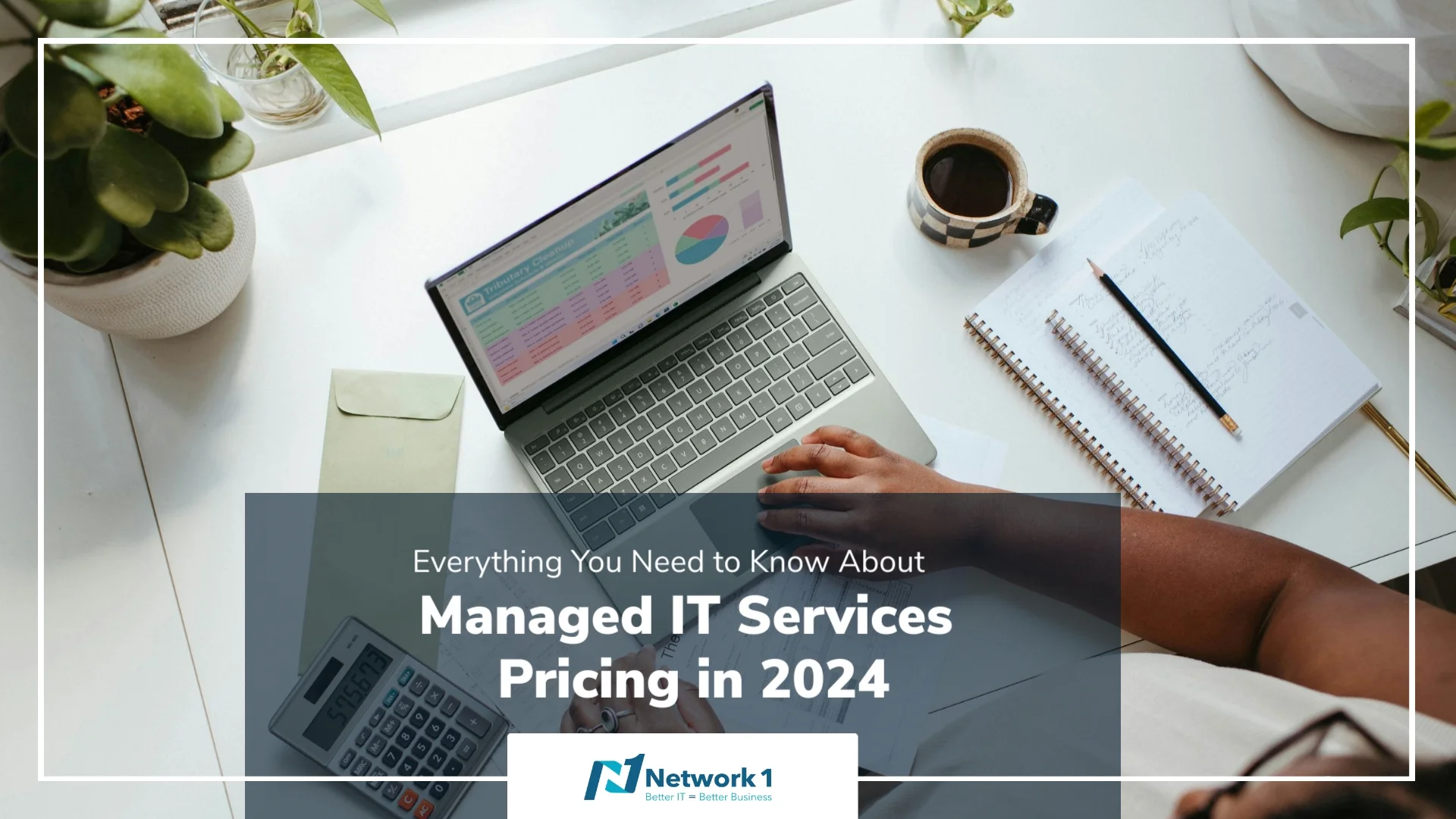
Managed IT services are doing wonders for small and medium-sized businesses. They act as an extended department for all their tech needs, thereby saving them the hassle of managing complex situations.
| As David Gracey, Founder & President of Network 1, says, “Managed IT services represent a strategic investment, turning technology into a driver of business growth and efficiency.” |
Amidst their popularity and growing market demand, figuring out managed IT services pricing often feels like an overwhelming challenge for many business owners.
As technology becomes increasingly integral to operations, the costs associated with maintaining an efficient, secure IT environment can quickly spiral out of control.
This dilemma places businesses in a difficult position, balancing the need for robust IT support against the financial constraints of their budget.
This blog aims to simplify managed IT services pricing in 2024, providing clarity and insight to help you make informed business decisions.
Understanding Managed IT Services Pricing Models
Managed IT services pricing varies depending on the provider and the type of services offered. Common pricing models include:
1. User Per Month
The user pricing model is highly popular for its simplicity and predictability. Businesses pay a set fee per user per month for a suite of IT services.
It’s particularly appealing for companies with a stable number of employees, as it allows for easy budgeting without the worry of fluctuating costs.
2. Device Pricing
The device pricing model offers a tailored approach for businesses that use a significant number of devices or have specific needs for different types of hardware. Charges are based on the number of devices being managed, such as laptops, desktops, servers, and mobile devices.
This model can be cost-effective for organizations with a high device-to-user ratio, as it allows for detailed control over which devices receive support and management.
3. Flat Fee
For businesses seeking comprehensive IT support without the variability of costs, the flat fee model is an attractive option. This approach involves a fixed monthly fee that covers different types of managed IT services offered by the provider.
It simplifies budgeting and financial planning, as companies know exactly what their IT support costs will be each month, regardless of the volume of support needed.
| Need Transparent IT Services Without Hidden Fees?
Experience clear, upfront pricing with Network 1 Consulting. |
4. Hourly Rates
The hourly rate model is ideal for businesses that require IT support on an irregular basis or for specific projects. It allows companies to pay for expert services only when needed, without committing to a monthly fee.
This model can be beneficial for small businesses or startups with limited IT needs or those with an in-house IT team that requires occasional external support.
5. À La Carte Pricing Model
The à la carte pricing model allows businesses to select specific IT services they need without subscribing to a full package. This model is akin to picking individual dishes from a menu rather than opting for a set meal.
It’s particularly beneficial for companies that have in-house IT teams but require external support for specialized services, such as cybersecurity audits, cloud services management, or specific software support.
6. Tiered Pricing Model
Tiered pricing structures offer predetermined packages of IT services at different price points, with each tier including progressively more services or higher service levels.
This model is designed to cater to businesses of varying sizes and needs, providing options ranging from basic IT support to comprehensive IT management and strategic consulting.
Factors Influencing Managed IT Services Pricing
| Factor | Description |
| Type of Services | Complexity and range significantly affect costs; advanced services like cybersecurity are pricier. |
| Business Size | Pricing structures vary; smaller businesses might find tailored packages, while larger ones may need comprehensive support. |
| Service Level Agreements (SLAs) | Higher service levels with faster response times and uptime guarantees come at a premium. |
| Expertise Level | The depth of expertise required for services can influence pricing; specialized knowledge costs more. |
| Technology Stack | The complexity of your technology infrastructure can affect pricing; more complex systems may require higher support costs. |
| Compliance Needs | Businesses needing to meet specific regulatory requirements may face higher costs for compliant IT services. |
| Customization | Custom solutions tailored to specific business needs can lead to higher pricing. |
| Scalability | The ability to scale services up or down affects costs; scalable solutions may command a premium for flexibility. |
Managed IT Costs Range
In 2024, the average cost of managed IT services can range widely. For a small to medium-sized business, expect to pay anywhere from $100 to $149 per user per month.
However, this price can vary depending on the additional costs associated with the type of services required and the level of support needed.
Managed IT Services Calculator
Utilizing a managed IT services ROI calculator can help businesses understand the long-term
value and cost savings of investing in managed IT services.
Calculate Your Managed IT Costs
Note: The calculator above uses hypothetical values to prepare a demonstrative estimate. The calculator does not reflect Network 1 Consulting’s pricing. For an accurate estimate of how much your managed IT services will cost, get in touch with our team.
Managed IT Services Price Lists and Rates
When reviewing a managed IT services price list, it’s crucial to understand each line item. Services like cybersecurity, data backup, and network monitoring are fundamental for protecting your business’s data and ensuring continuity.
However, additional costs may arise for services beyond the basic package, such as specialized software support or advanced security measures.
Comparing managed IT services rates between providers requires a careful analysis of not just the cost but the value each offers.
Factors such as the provider’s industry reputation, the breadth of their service offerings, and customer testimonials play a significant role in determining the best fit for your business.
| More resources you might like: |
The Benefits of Managed IT Services
Investing in managed IT services can offer several benefits, including:
- Cost Savings: By outsourcing IT management, businesses can save on the costs of hiring in-house staff.
- Expertise: MSPs offer access to experts with specialized knowledge, ensuring your IT needs are handled efficiently.
- Focus on Core Business: With IT concerns managed by a provider, business owners can focus more on their core operations.
- Proactive Support: Managed IT services provide proactive monitoring and maintenance, preventing issues before they disrupt business operations.
- Enhanced Security: MSPs implement advanced security measures to protect against cyber threats, ensuring your data and IT infrastructure are secure.
Navigate IT Complexities With Network 1 Consulting’s Expertise

Network 1 Consulting stands out as a leading Managed IT Services Provider, with 25 years of experience delivering tailored IT solutions. We understand the unique challenges businesses face and offer flexible, transparent pricing to meet your needs.
| Explore our range of IT services in Atlanta:
|
Our commitment to excellence and customer satisfaction reflected in our 98.43% CSAT rating makes us the ideal partner for your IT management needs.
Reach out to Network 1 Consulting for a free consultation and discover how we can help optimize your IT operations, reduce costs, and drive your business forward.








